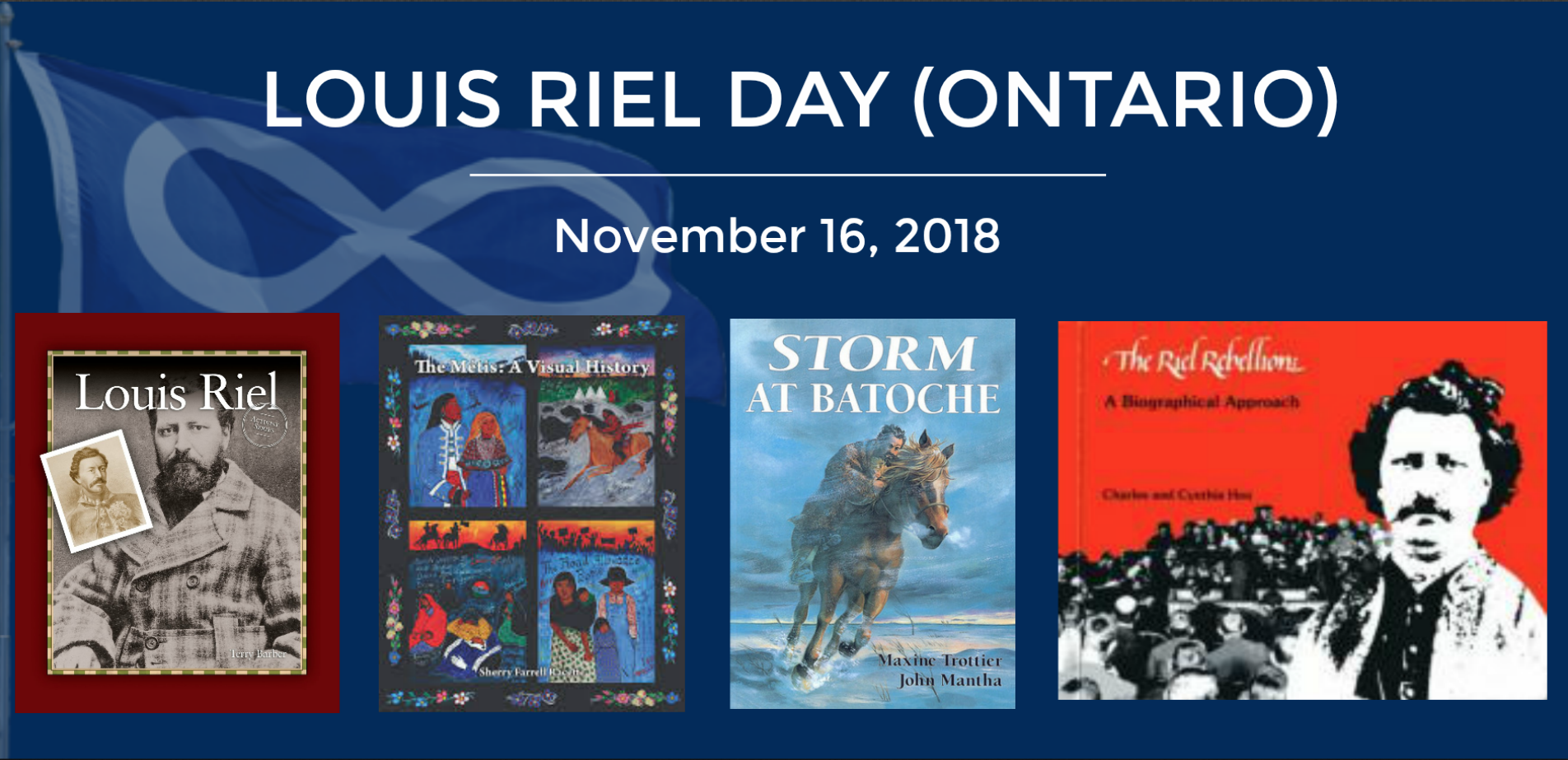“I am more convinced everyday that without a single exception I did right. And I have always believed that, as I have acted honestly, the time will come when the people of Canada will see and acknowledge it.” – Louis Riel
“We must cherish our inheritance. We must preserve our nationality for the youth of our future. The story should be written down to pass on.” – Louis Riel
Today on November 16th we join the Métis Nation to mark the 133rd anniversary of the execution of Louis Riel. This is an important day for Métis people across the Métis Homeland as it is an opportunity to honour the sacrifice made by Louis Riel who gave his life in order to defend Métis rights. This post is a part of our series for Indigenous Education Month throughout November.
Louis Riel was a political leader who led the Red River Resistance, an important time in the history of the Métis Nation leading up to the 1869 establishment of the Provisional Government. Later he also fought the Canadian Government in the North-West Resistance, culminating in the Battle of Batoche. Because of his leadership role in this resistance, Louis Riel was eventually executed for treason by the Canadian Government.
In this list of resources, OISE Library compiled materials on the importance of Louis Riel, and also the history of the Métis Nation. For a more thorough understanding of Métis identity and nationhood, please see Métis: race, recognition, and the struggle for Indigenous peoplehood by Chris Andersen. At the end of this post, there will be a list of prominent Métis scholars as well.
Louis Riel by Terry Barber is a resource about the life of Louis Riel targeted at reluctant readers. Through the use of repetition of vocabulary, students will learn about the history of the Red River Settlement and Riel while also developing a greater appreciation for reading. This resource is especially appropriate for English Language Learners learning about Indigenous peoples through literature.
The Métis: a visual history is a stunning collection of art and history created by the Gabriel Dumont Institute, meant to highlight the history of the Métis from the birth of the Métis Nation to the near past. This is an important resource for authentic Métis voices in the telling of the birth and movement of the Métis Nation. This resource will not only offer a better understanding of the history, but also the sovereignty and development of Métis nationhood.
Storm at Batoche is a fictionalized account of a boy, James, who meets Louis Riel during a storm. During this encounter, Riel teaches James how to make bannock and reminds him that there are similarities and differences between their cultures. Riel stresses that both need to be celebrated. Later in the book, there is an easy recipe for how to make bannock.
The Riel Rebellion: A biographical approach encourages students to engage with primary sources to critically think about Louis Riel and his legacy. Through activities such as creating comic strips, evaluating monuments and comparing newspaper articles, students are encouraged to develop critical thinking skills through inquiry based learning.
There are many Métis scholars who continue to advance work in Métis identity and ways of knowing. Some of these people include:
Chelsea Vowel, Zoe Todd, Chris Andersen, Michelle Murphy, Kim Anderson, Chelsea Gabel, Brenda Macdougall, Janet Smylie, Jennifer Adese and Adam Gaudry.

